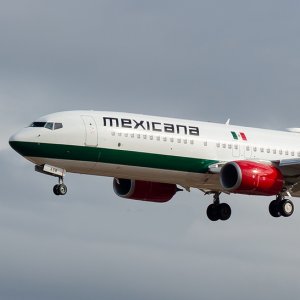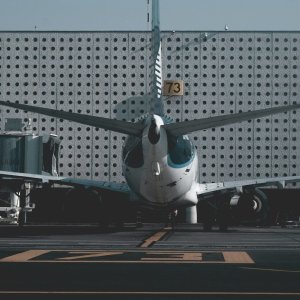Resilience, Adaptation Key to Airport Recovery Post-Pandemic

Q: How was OMA's passenger flow in 2021?
A: In 2021, our passenger flow fell 22 percent compared to 2019. Our forecast was to service 16 million passengers. However, we serviced 18 million. The group manages 13 airports and handled 23 million passengers in 2019. Throughout the pandemic, we had a significant drop in terminal passenger traffic. Nevertheless, since 2020 we have seen a steady recovery. We are confident this recovery trend will continue in 2022. January was a difficult month due to the emergence of the omicron variant but we believe that the impact will be short-lived.
Q: How has omicron altered OMA's resilience strategy to avoid delays in its recovery trend?
A: The difference between the emergence of the omicron variant and the start of COVID-19 in 2020 is that this time it did not take us by surprise, as we were already prepared. Prior to COVID-19, the aerospace industry had never experienced something similar to this crisis. The last two years have been a learning period for everyone. Therefore, when we faced omicron, we had the experience that allowed us to adapt quickly and avoid major disruptions in the industry.
Q: What sanitary measures has OMA taken to maintain passenger health and safety?
A: We have trained all our personnel to address the health crisis and have adapted our terminals to the needs of this new reality. Passengers are looking for more agile processes with less physical contact. In addition, we have adapted our service by implementing strict sanitary measures that include acrylics, disinfectant mats, antibacterial gels and the mandatory use of masks for all employees and passengers. Sanitation will remain a necessity and a constant demand from passengers, so it is important to maintain these standards.
Q: How have OMA's customer service strategies evolved to maintain close engagement with its users?
A: Airports have transformed over time. Thirty years ago, passengers only took off and landed; today, airports offer a much more complete experience. For instance, the flying experience for many starts the day before flying and ends when they arrive at their final destination. It is our responsibility to provide the best user experience for passengers throughout all stages of the journey. The pandemic has consolidated the implementation of technology to improve and streamline processes at airport terminals. Although it was an emerging trend, the pandemic accelerated it. Today, passengers demand more agile processes with less interaction. This improves the user experience.
Q: What are the near-term expectations for Mexican air traffic?
A: We have optimistic projections for the future of air traffic in Mexico. The International Air Transport Association (IATA) predicts that air traffic will double in the next 20 years throughout the country. Therefore, our responsibility is to be ready with the necessary infrastructure. In Mexico, the competent authority is the Federal Civil Aviation Agency (AFAC), which coordinates stakeholders so they can participate in strengthening airport infrastructure. At Grupo OMA, we work closely with AFAC to ensure that our future investment plans are aligned with foreseen traffic projections.
Q: How have cargo operations fared during the pandemic?
A: During the pandemic, cargo operations saw significant growth. Today, we are operating 30 percent above our 2019 cargo figures. The pandemic triggered e-commerce, which is reflected in superior cargo levels. At OMA, we are managing our warehouses so that they are prepared to handle the increase in cargo flows.
Q: What is OMA's investment plan for 2022?
A: We have announced a MX$12billion (US$588.5 million) investment program for the next five years. It is considered the largest investment program in OMA's history. These funds will be allocated primarily to terminal expansion at our 13 airports. Our Monterrey airport will absorb more than half of these funds, with a total investment of MX$7 billion (US$343.3 million) to expand its capacity by 50 percent.
Our projects include expansions at Culiacan and Ciudad Juarez airports, where we will double the current capacity at both terminals. In Tampico and Zihuatanejo, we plan to modernize runways, aprons and taxiways.
Q: How has OMA developed its sustainability strategy?
A: We have specific goals aimed at reducing our carbon footprint in the coming years. One example is the first placement of green bonds for an airport group in Mexico. A green bond forces us and our investors to allocate part of the funds to sustainable projects, such as energy efficiency, green energy generation, water and waste treatment. Environmental issues are no longer just a matter of social responsibility for companies; they have become an economic issue as well.
The aeronautical sector is highly regulated and we are always in compliance with all environmental requirements enforced by the authorities. Likewise, we ensure that our commercial tenants comply with these guidelines.
Q: In addition to environmental efforts, what other ESG strategies is OMA implementing?
A: Sustainable strategies go beyond environmental elements; they also include social and governance initiatives. For us, it is fundamental to consolidate strategies in all three areas. At the beginning of 2022, Grupo OMA became a Top 10 company in the Bloomberg Index for Gender Equality. The company is highly committed to gender equality since 45 percent of our total corporate staff is made up of women. Diversity generates better decision-making and better results.
Grupo Aeroportuario del Centro Norte (OMA) is an airport group that manages and operates 13 airports in Mexico’s central and northern region. In 2019, OMA’s passenger traffic reached 23 million people.



 By Sofía Hanna | Journalist and Industry Analyst -
Mon, 03/07/2022 - 09:42
By Sofía Hanna | Journalist and Industry Analyst -
Mon, 03/07/2022 - 09:42
















